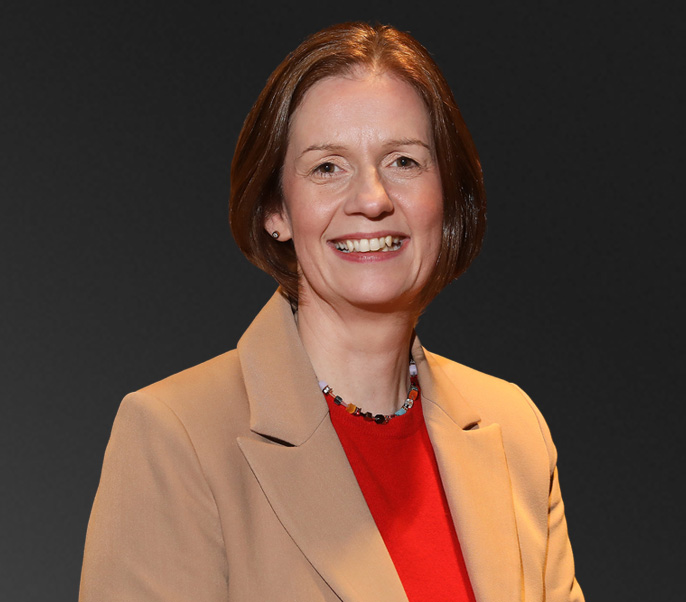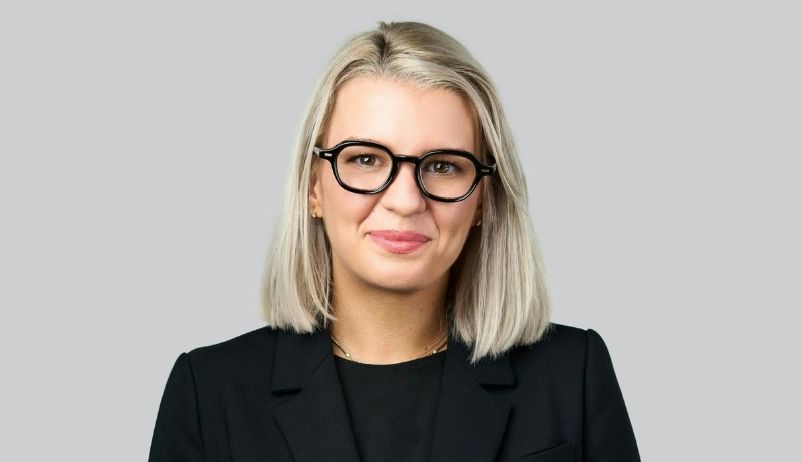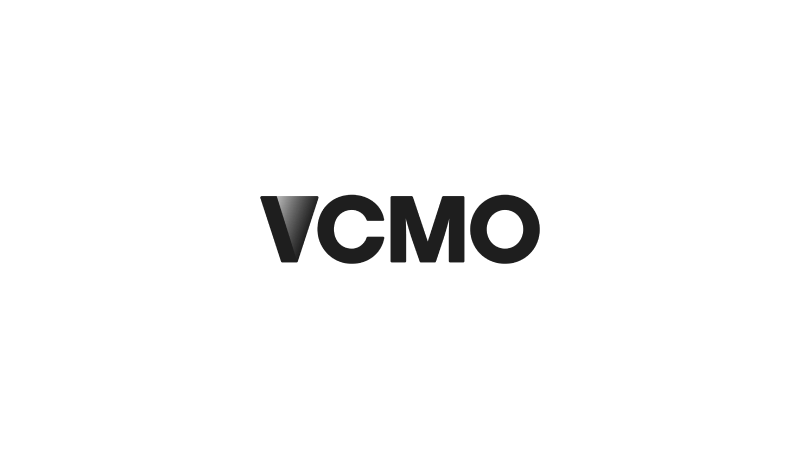Explore how senior marketers transition into flexible, high-impact portfolio careers as Fractional CMOs.
Introduction: A New Era of Marketing Careers
Marketing leadership is undergoing a profound shift. Once defined by long tenures in corporate C-suites, the career path for senior marketers is being reshaped by structural changes in business and work itself. Companies are under pressure to demonstrate growth with agility, investors are demanding measurable returns on every pound of spend, and the workforce has embraced flexible models that prioritise autonomy and variety. Against this backdrop, the role of the Fractional Chief Marketing Officer (CMO) has emerged as a compelling alternative to the traditional full-time post.
For experienced marketers, the attraction is clear. Becoming a Fractional CMO enables professionals to move beyond corporate confines and apply their expertise across multiple businesses and industries. The model offers greater independence, exposure to diverse challenges, and the ability to design a portfolio career that reflects personal priorities as much as professional ambition.
For businesses, the demand for fractional leadership is rising rapidly. Rather than committing to the cost and permanence of a full-time CMO, companies can access senior strategic capability on a flexible basis—aligning leadership with commercial needs and cash flow realities.
This article explores what it takes to make the transition, the skills required, and the considerations for marketers contemplating this career-defining step.
Why Fractional CMOs Are in Demand
The rise of fractional marketing leadership reflects two converging forces: what businesses need, and what senior marketers increasingly want. On the business side, growth is under greater scrutiny than ever. Investors and boards demand evidence that marketing spend is driving measurable outcomes, while CEOs are expected to scale faster with fewer resources. Hiring a full-time CMO can be expensive, slow, and risky—particularly for early-stage ventures or mid-market firms navigating uncertain conditions. A Fractional CMO offers immediate access to top-tier leadership without the long-term financial commitment.
At the same time, experienced marketers are rethinking what a “career” looks like. Many are leaving traditional corporate roles in favour of greater autonomy, variety, and balance. The normalisation of remote and hybrid work has accelerated this shift, making it easier for seasoned executives to build a portfolio career that spans multiple clients, sectors, and geographies. For many, the attraction is not only financial but professional: applying expertise to new challenges, learning across industries, and escaping the rigidity of corporate structures.
This alignment of supply and demand explains the momentum behind fractional leadership. It is no longer a niche option but a mainstream model, reshaping how senior marketing expertise is accessed and how careers are built.

“Fractional marketing leadership is no longer a niche concept—it has become a mainstream model for businesses seeking agility and executives seeking renewed purpose.”
Lydia McClelland - Chartered Fractional CMO, VCMO
What It Means to Be a Fractional CMO
At its core, the Fractional CMO role mirrors that of a full-time CMO, but with greater flexibility and a sharper focus on measurable outcomes. The distinction lies not in capability but in the engagement model: Fractional CMOs deliver the same strategic leadership, but on a part-time or project basis. This means bringing executive-level oversight to businesses that may not yet require—or be able to afford—a permanent appointment.
Typical responsibilities include:
- Strategic Planning & Alignment — Developing long-term marketing strategies that tie directly to revenue, growth, and enterprise value.
- Brand & Market Positioning — Defining value propositions, refining messaging, and ensuring consistency across channels.
- Digital & Data Leadership — Leveraging digital platforms, analytics, and automation to drive measurable marketing performance.
- Market & Customer Insight — Conducting competitor analysis and using customer data to shape decisions and identify opportunities.
- Team Mentorship & Capability Building — Coaching existing marketing teams, addressing skills gaps, and embedding processes that outlast the engagement.
- Performance Measurement — Establishing KPIs linked to commercial outcomes, not vanity metrics, to demonstrate marketing ROI.
In short, Fractional CMOs function as embedded leaders, guiding strategy, aligning execution, and creating lasting impact—without the overhead of a full-time hire.
Skills and Mindset Required
Succeeding as a Fractional CMO demands more than technical marketing expertise. It requires a shift in mindset and a blend of capabilities that go beyond those typically exercised in a single corporate role. At the heart of the transition is the ability to operate entrepreneurially. Unlike in-house CMOs who inherit established teams and budgets, fractional leaders must constantly balance business development with client delivery, ensuring a steady pipeline of work while meeting high expectations for impact.
Strategic acumen remains central, but adaptability becomes equally critical. Each client engagement brings a new context, sector, and set of challenges, requiring the ability to quickly diagnose issues and design bespoke solutions. Communication skills are also paramount. Fractional CMOs need to influence CEOs, boards, and teams without the authority of a permanent role, relying instead on clarity, persuasion, and credibility to drive alignment.
Equally important is commercial literacy. Clients expect more than brand vision—they want evidence of financial impact. A successful Fractional CMO must be comfortable linking marketing activity to revenue, pipeline, and valuation, often under investor scrutiny. This combination of strategy, adaptability, influence, and commercial discipline forms the foundation of a sustainable and rewarding portfolio career.

“Success as a Fractional CMO is as much about commercial resilience and adaptability as it is about strategic expertise. You need to think like a leader and operate like an entrepreneur.”
Rachael Wheatley - Chartered Fractional CMO, VCMO
Adjusting from Corporate to Portfolio Work
Moving from a corporate career into fractional marketing leadership is not simply a change of employer—it is a fundamental shift in how you work, position yourself, and measure success. In-house roles provide structure: fixed teams, predictable budgets, and a clear hierarchy. By contrast, a portfolio career demands entrepreneurial agility. Fractional CMOs are responsible not only for delivering impact to clients but also for building their own practice, managing client acquisition, and handling the operational aspects of running a business.
This transition often requires a recalibration of habits and expectations. Client engagements may be shorter, objectives sharper, and outcomes tied to immediate commercial performance rather than multi-year brand programmes. The ability to juggle multiple clients, each with different cultures and needs, calls for strong organisational skills and resilience.
Work-life boundaries must also be consciously managed. Without the natural guardrails of corporate structures, the risk of overcommitment or burnout is high. Successful Fractional CMOs establish routines, boundaries, and support systems to sustain performance across multiple engagements.
In many ways, the move represents both liberation and responsibility: freedom from corporate politics, but accountability for building a career that depends on your ability to deliver consistent value across diverse contexts.
Financial Readiness and Planning
One of the most significant adjustments in moving to a Fractional CMO career is financial. Unlike a salaried role, income is no longer predictable. Earnings can fluctuate based on client demand, contract length, and the balance between retained work and shorter projects. For many, this variability is the greatest barrier to entry. Preparing for it is essential.
A common recommendation is to build a financial runway of at least six months of core living expenses before making the transition. This provides a buffer during quieter periods or while client acquisition gathers pace. Diversifying income streams across multiple clients also helps mitigate dependency on a single engagement, spreading both risk and opportunity.
Fractional CMOs typically operate under three pricing models: retained services, fixed-price projects, or day rates for short sprints. Each requires careful budgeting, particularly when factoring in tax, insurance, pension contributions, and other overheads usually absorbed by an employer. Establishing clear financial goals—and regularly reviewing progress against them—is vital for sustainability.
While the financial independence of a portfolio career can be rewarding, it requires planning, discipline, and a long-term mindset. Those who treat financial management with the same rigour they bring to client engagements are best positioned to thrive.
Potential Drawbacks to Anticipate
While the appeal of fractional leadership is strong, it is important to recognise the challenges that accompany the freedom. Many senior executives underestimate the following drawbacks:
- Income Volatility — Unlike the predictability of a corporate salary, earnings as a Fractional CMO can fluctuate significantly. Seasonal demand, client turnover, and contract variability require financial discipline and the ability to manage cash flow during quieter periods.
- Loss of Benefits — Traditional employment benefits such as pensions, health insurance, paid leave, and bonuses do not carry over. Fractional CMOs must plan independently for retirement, insurance, and personal wellbeing, which adds administrative and financial complexity to the role.
- Ongoing Client Acquisition — Securing and retaining clients is a constant requirement. Even established fractional leaders must dedicate time to networking, thought leadership, and business development, activities that do not directly generate income but are vital to pipeline health.
- Administrative Burden — Running a fractional practice involves managing contracts, invoicing, tax compliance, and marketing your own services. These non-billable tasks consume time and can distract from delivery if not streamlined effectively.
- Workload Spikes — Juggling multiple clients means periods of intense activity, where competing deadlines and expectations create stress. Without careful scheduling and boundary-setting, overcommitment can quickly lead to burnout.
- Limited Cultural Integration — As a part-time leader, integration into client organisations can be limited. This can make influencing stakeholders or driving cross-departmental initiatives more challenging than in a permanent role.
- Emotional Adjustment — Leaving behind the identity and stability of a senior corporate post can be psychologically demanding. Some executives underestimate the shift required to operate independently without the status or support structures of a permanent C-suite role.
- Reputation at Risk — Every engagement carries personal brand consequences. Unlike in-house roles where results are shared across a team, Fractional CMOs are judged individually by each client, heightening accountability and the stakes for consistent performance.

“A portfolio career offers freedom, but it also demands discipline. Without preparation, the volatility and workload can overwhelm even the most experienced marketer.”
Dan Gwalter - Executive Coach, No-Nonsense Leadership
Assessing Your Readiness to Switch
The decision to move into fractional marketing leadership should not be taken lightly. Success depends on more than years of corporate experience; it requires adaptability, commercial resilience, and an appetite for entrepreneurial risk. Before making the leap, senior marketers should take a structured approach to evaluating their readiness.
This begins with an honest self-assessment. Do you thrive in environments where ambiguity is high, and results are expected quickly? Are you comfortable with the responsibility of securing your own clients while simultaneously delivering at C-suite level? Do you have the financial resilience to manage variable income without compromising personal security? These questions cut to the heart of whether you are prepared for a portfolio career.
It is equally important to assess softer factors: your appetite for independence, your ability to self-motivate without corporate structures, and your willingness to continually market yourself as much as your clients. Speaking with those already operating in fractional roles can also provide invaluable perspective.
Take our test: To help you evaluate whether this is the right path, we’ve created a Fractional CMO Readiness Assessment—a four-minute online survey designed to test your suitability and readiness to become a Fractional CMO Associate at VCMO. Take the assessment here.
Resources to Support the Transition
No senior marketer should make the leap into fractional leadership without preparation. The transition requires new skills, new networks, and a different mindset from traditional corporate roles. Fortunately, there are plenty of resources available to help smooth the path and reduce the trial-and-error that often accompanies such a change.
The most comprehensive starting point is our Ultimate Guide to Becoming a Fractional CMO, a 70-page resource created by our practitioners who have successfully made the shift. It covers everything from identifying your niche and setting up your business, to building a client pipeline and creating a sustainable portfolio practice. For many executives, it has become the playbook for navigating this career evolution.
In parallel, our Fractional Futures Podcast offers first-hand insights from leaders who have already embraced the portfolio model. Across ten dedicated episodes, you’ll hear practical strategies, candid reflections, and real-world stories that bring the realities of fractional leadership to life.
Together, these resources provide both strategic context and tactical guidance. They are designed to help senior marketers not only understand the opportunities but also avoid the common pitfalls. For those serious about building a successful portfolio career, they are an essential part of the preparation journey.
.jpg)
Conclusion – Building a Sustainable Portfolio Career
Becoming a Fractional CMO is more than a career pivot; it is the creation of a new professional identity. It demands strategic expertise, entrepreneurial drive, and the resilience to balance client delivery with the realities of running an independent practice. For many senior marketers, the rewards are significant: greater flexibility, exposure to diverse challenges, and the satisfaction of applying their experience to shape the growth journeys of multiple businesses.
Yet the move requires realism as much as ambition. Income will fluctuate, benefits must be self-managed, and success depends on your ability to continuously build relationships and demonstrate measurable impact. Those who prepare carefully—financially, professionally, and mentally—are best placed to build a practice that is both commercially rewarding and personally fulfilling.
Ultimately, fractional marketing leadership represents the next chapter for many seasoned marketers seeking to move beyond corporate structures. It allows you to leverage years of experience in a way that drives value for clients while providing autonomy and variety for yourself. With the right preparation, resources, and mindset, a portfolio career can deliver not only financial independence but also renewed professional purpose.
Suggested Further Reading
The Benefits of Hiring a Chartered Marketer
Top Reasons for Businesses to Hire a Fractional CMO
Top Reasons to Not Hire a Fractional CMO
About VCMO
VCMO is a UK-based provider of fractional marketing services, supporting B2B SMEs—ranging from funded scale-ups to mid-tier and private equity-backed businesses—through key moments of growth and transformation. Its Chartered Fractional CMOs and SOSTAC® certified planners embed strategic marketing leadership into organisations navigating product launches, new market entry, acquisitions, and leadership gaps.
What’s a Rich Text element?
The rich text element allows you to create and format headings, paragraphs, blockquotes, images, and video all in one place instead of having to add and format them individually. Just double-click and easily create content.
- By following these tips, you can make sure you’re noticed on LinkedIn and start building the professional connections you need to further your career.
-

Static and dynamic content editing
A rich text element can be used with static or dynamic content. For static content, just drop it into any page and begin editing. For dynamic content, add a rich text field to any collection and then connect a rich text element to that field in the settings panel. Voila!
How to customize formatting for each rich text
Headings, paragraphs, blockquotes, figures, images, and figure captions can all be styled after a class is added to the rich text element using the "When inside of" nested selector system.


Ready to take your marketing to the next level? Let us help you get there.
Subscribe to Our Newsletter
Fractional Edge is our montly newsletter sharing expert opinion on the latest trends in fractional leadership, curated marketing content from leading sources, VCMO events, and much more. Subscribing is quick — just add your name and email.











.jpg)





